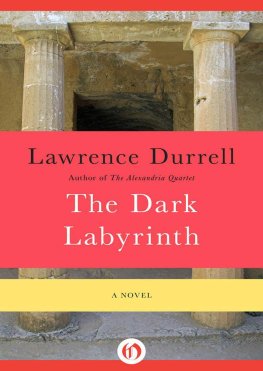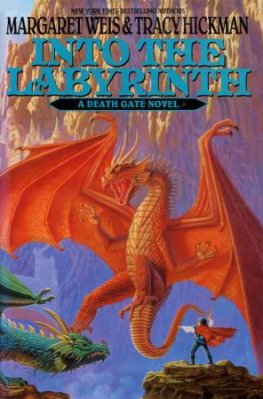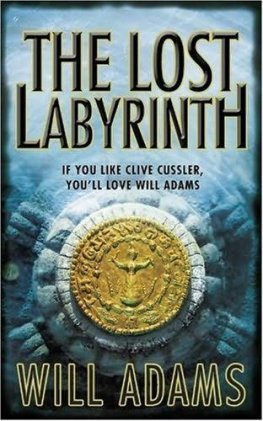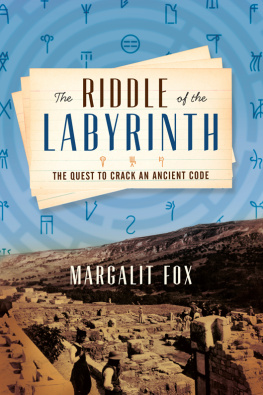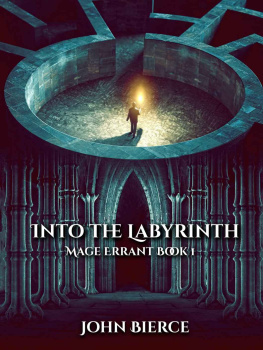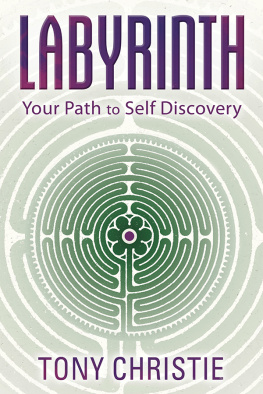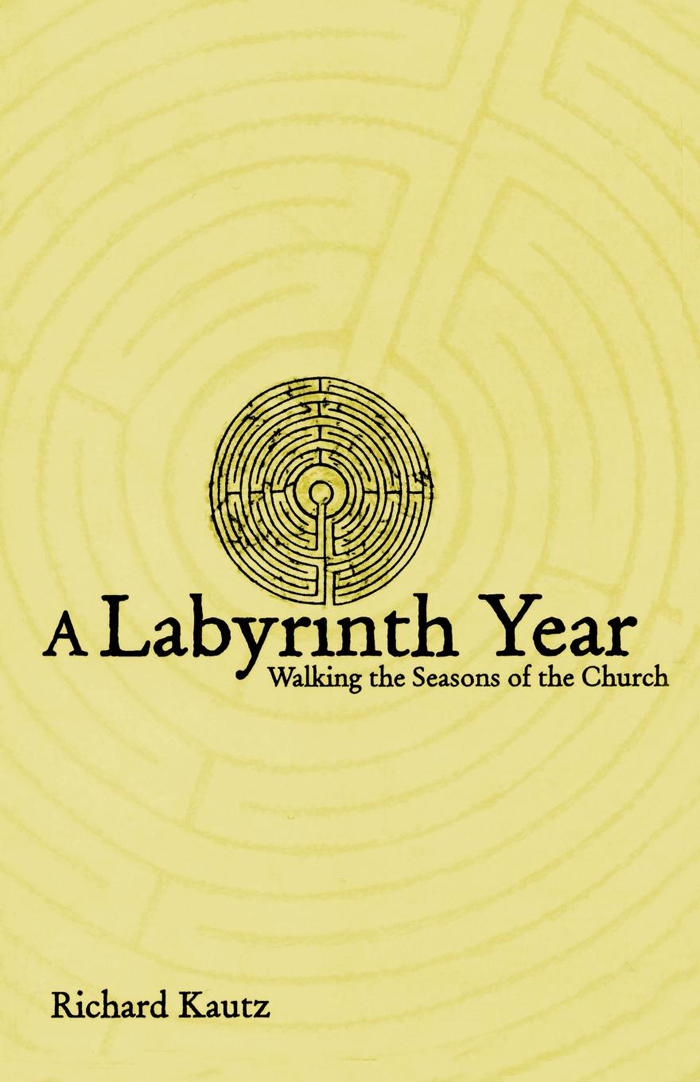A Labyrinth Year

A Labyrinth Year
Walking the Seasons of the Church
Richard Kautz

Copyright 2005 by Richard A. Kautz
All rights reserved. No part of this book may be reproduced, stored in a retrieval system, or transmitted in any form or by any means, electronic or mechanical, including photocopying, recording, or otherwise, without the written permission of the publisher.
Unless otherwise noted, the Scripture quotations contained herein are from the New Revised Standard Version Bible, copyright 1989 by the Division of Christian Education of the National Council of Churches of Christ in the U.S.A. Used by permission. All rights reserved.
Morehouse Publishing, 4775 Linglestown Road, Harrisburg, PA 17112
Morehouse Publishing, 445 Fifth Avenue, New York, NY 10016
Morehouse Publishing is an imprint of Church Publishing Incorporated.
www.churchpublishing.org
Library of Congress Cataloging-in-Publication Data
Kautz, Richard A.
A labyrinth year : walking the seasons of the church / Richard A. Kautz.
p. cm.
ISBN 978-0-8192-2157-5 (pbk.)
1. Church year meditations. 2. Bible--Devotional use. 3. Labyrinths--Religious aspects--Christianity. I. Title.
BV30.K35 2005
242.3--dc22
2005004739
Printed in the United States of America
To my wonderful kids
Ron, Stephanie, and Jessica.
Thanks for putting up with your crazy dad.
I love you with all my heart.
Contents
Advent/Christmas
Epiphany
Lent
Easter
The Season After Pentecost
Acknowledgments
I would like to start by thanking the Bad Girls of the Thursday morning womens bible study at Trinity Episcopal Church in Greeley, Colorado. I began this book as an Advent bible study based on the labyrinth. After we finished the class, this group encouraged me to look into having it published. Without their loving support and gentle nudging, this book would never have been published.
Before I sent the original manuscript off to a publisher, I had two friends from Trinity go over the document with a fine tooth comb. A special thanks to Helen Lonsdale and Deirdre White-Jones for their expertise in grammar and language. Their comments were both helpful and encouraging.
When Morehouse asked me to expand the book to include the full Church calendar, I knew I couldnt face the task on my own. I asked Helen once again if she would help me. She agreed and kept plugging through my writing even during a brief health crisis. Thank you from the bottom of my heart, Helen. You were a Godsend and I could not have done it without you.
I want to thank Nancy Fitzgerald at Morehouse Publishing. Nancy, you were loving and gentle with this first-time author. Thank you for your ideas and comments. Your polish really shines through.
Last, and not least, I want to thank my family. They supported me through a lot of personal growth and change. You helped make me who I am. Thank your for your love throughout the years. I love you.
Introduction
The Journey
Deep within all people and in every culture is knowledge of the great journey. Call it a quest, or an odyssey, or the great adventure: youll find it in childrens stories, songs, art, literature, andin modern timesin movies and on television.
The Bible is a collection of stories of Gods people on a journey. The journey began when Adam and Eve were expelled from the garden. Our first parents had lived fully in Gods presence, walking and talking with their creator. Gender exclusive is fine in the cool shade of paradise. But when sin entered into paradise, humankind was driven out of the presence of God. Since that moment, all of us have been on a journey back to Eden, on an eager walk back to God. St. Augustine of Hippo wrote, Our heart is restless, until it rests in Thee.
For the Church, this journey, taking on a special meaning, has become a pilgrimage. The practice of pilgrimage is common to most religions. Hindus travel to Benares, the holiest site in India. Muslims are to make at least one pilgrimage to Mecca in their lifetime. Jews as well as Christians travel to Jerusalem. The practice of the Christian pilgrimage to the Holy Land started in the fourth century CE, when Helena, mother of the emperor Constantine, visited Jerusalem and traced the steps of Christ on his way to the cross.
Today a pilgrimage is any journey we take to a holy place as an act of devotion, thanksgiving, or penance, or in search of a healing. Christian pilgrimage sites are spread across the globe, from Lourdes, to Chartres in France, to Medjugorje in Bosnia, to Our Lady of Wal-singham in England, and to sites as far away as Mt. Sinai in Egypt and the shrine of Guadalupe in Mexico. But as important as the destination is the process of the journey itself. As people of the Incarnationdisciples of Jesus, who is God-made-fleshwe somehow need to flesh out what is happening to us spiritually. Historically, primarily Catholics, Orthodox, and Anglicansmembers of churches that identify themselves as sacramentalhave sensed the importance of making an outwardly visible sign of Gods invisible spiritual grace through an act of pilgrimage. But Christians from all denominations are beginning to connect with their need for an outward pilgrimage that mirrors their inward journey. In the words of St. Augustine, It is solved by walking.
The Labyrinth
Almost as ancient as the pilgrimage itself is the symbolic journey of the labyrinth. Dating back more than four thousand years, the oldest European labyrinth, known as the classic seven-circuit variety, was found on the island of Crete. Labyrinths are found in a variety of belief structures, from Judaism to Native American religions, and in countries like England, Scandinavia, Germany, and the Americas. Some labyrinths, laid out in gardens and fields and in the floors of temples and great cathedrals, were designed to be walkedthe earliest and most famous of these is in the nave of Chartres Cathedral in France. Smaller images of labyrinths, intended strictly for meditation, were placed in paintings, sculptures, and tapestries. But whether the labyrinths are used for mental or physical meditation, they express humanitys quest for something more. They help us get in touch with the great journey buried in our hearts.
The labyrinth takes us on a journey that brings us to the very center of our beingand back out again. Unlike a maze, which is designed to keep us lost or confused, a labyrinth is designed to help us find our way to our core. And even when weve reached it, our journey is not complete. Its only half over. Were not to just walk away, but to retrace our steps back out to complete the full cycle.
The labyrinth, neither inherently Christian nor non-Christian, has been adapted to our faith tradition in the same way that symbols like the Advent wreath and the Christmas tree began as pagan practices and were later baptized by the Church and infused with Christian meaning. A labyrinth is merely a tool that helps us bring a spiritual reality into a tangible experience. In the pages of this book, seekers will discover a labyrinth journey that takes them through the seasons of the Church year.
How to Use the Meditations in This Book
The Church calendar is made up of commemorations and feasts for specific Holy Days such as Christmas, Ash Wednesday, and Easter Sunday. The calendar also divides the year into six seasons: Advent, Christmas, Epiphany, Lent, Eastertide, and the Sundays after Pentecost, normally called Ordinary Time. The seasons roughly coincide with the life and ministry of Jesus.


